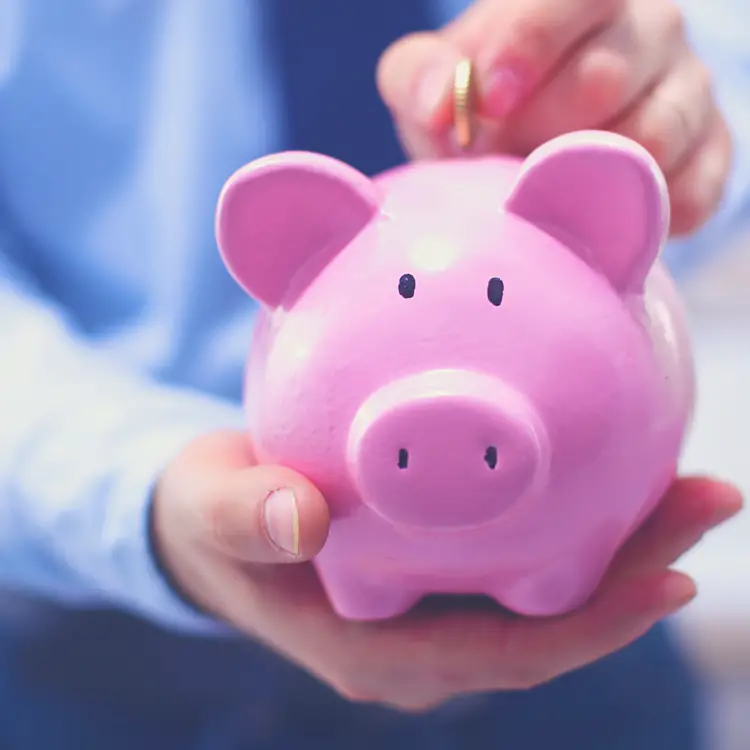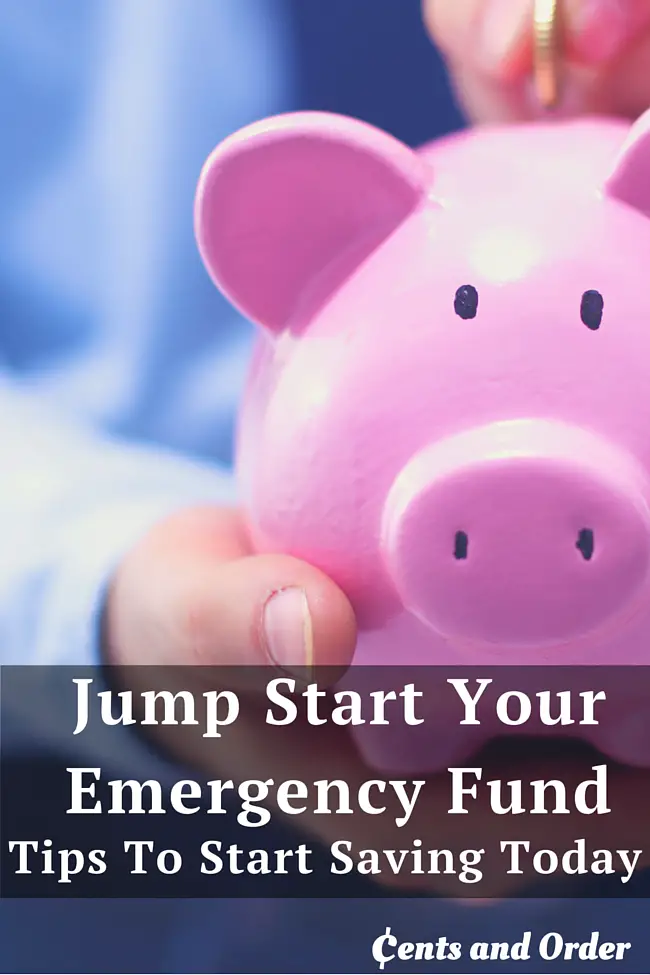You’ve probably heard that you should have 6 months of expenses set aside in an emergency fund. Or heard if you are self-employed this should be 12 months of expenses. Does this thought make you feel hopeless?
I know it can seem like an impossible goal to save up that much, and you may feel like you shouldn’t even bother trying.
If you have debt, you probably want to work on paying that down even more than you want to build up an emergency fund.
Table of Contents
Start Small
Instead of working to a seeming impossible 6 months of expenses, start with working towards a $500 (if you are single) emergency fund or $1000 (if you are in a financial partnership) emergency fund.
This probably feels like a more realistic amount. If your budget is tight, even $500-$1000 may seem like a large amount.
However, we can give you some ideas to help jump start this fund. Because truth be told, every dollar you save in your emergency fund can add up.
Why You Need An Emergency Fund
It is important to have something to fall back on when an emergency happens. Without funds set aside, a car repair might end up on your credit card–and that’s the cycle that has to stop.
Otherwise, the emergencies pile up and before you know it you have a hefty credit card balance.
Being able to cover these expenses as they occur instead of having to use debt will be a freeing feeling.
Here are some tips for getting started on your emergency fund.
Get Started
- Establish a savings account as your designated emergency fund.
- If you bank or credit union requires a minimum higher than what you have, consider keeping your fund at home until you have enough to meet any minimum balance requirements. The last thing you is minimum balance charges taking from your emergency fund. A glass jar, mug, or even a shoebox can work for your emergency fund in the interim.
- Suggestion: Keep your emergency fund savings account at a different bank so you’ll be less likely to access it.
- I recommend a liquid account (NOT a certificate of deposit or time savings account) to avoid penalties if you do need to access it.
- If having a penalty attached to the account is a deterrent from spending your emergency fund, then a certificate of deposit or time savings account may work better for you.
Ideas To Jump Start Your Savings
Next, utilize the following ideas to jump start your emergency fund.
Use Found Money
When you implement an idea that saves money, be sure to put the money saved to your emergency fund.
For example, if you spend $20 less than your budget on groceries for the week, be sure that $20 goes to your fund. If you wait until later, the money will probably not end up in your emergency fund.
Put other “found money” in the account too, such as:
- overtime hours at work
- money from a second job or side hustle
- tax refunds
- work bonuses
- birthday and holiday gifts
- money from when you return items you purchased
Anytime you get cash you didn’t expect, designate at least half–if not all–of it for your emergency fund.
Treat It Like A Bill
Setting up an auto transfer from checking to savings each month is another good way to jump start your emergency fund.
It doesn’t have to be a large dollar amount each month, because again, it all adds up. Just put a line item in your budget for your emergency fund like you do for bills each month.
Then set the “bill” up on auto transfer so you can’t get away with “not” paying the bill.
Get Some Extra income
Having trouble finding “found” money? Maybe it’s time to get a second job or a side hustle.
Pick up a server job at a local restaurant. Start your own business using your skills.
Or start driving for Uber or renting out a room in your house on Airbnb.
There are lots of ways to make extra money. Find some and be sure to put the extra earnings in your emergency fund.
Cut Your Budget
A fourth idea for jump starting your emergency fund is to find ways to save money on current expenses. Do things like:
- spend less on groceries
- stop eating out for a while
- ditch your cable or satellite service
- cut down on salon expenses by doing colors, cuts, and mani/pedis at home
- drop other monthly services you don’t really need, like your gym membership
Now here are some other great articles to give you inspiration on ways to save money.
Here’s some other great articles to give you inspiration for ways to save:
View Along the Way has some great tips on ways to save money from groceries to around the house and more.
Little House Living has tips for ways to cut costs when you are already frugal.
Living Well Spending Less has 10 great ways to start your emergency fund.
Also, check out my money saving posts:
5 Ways You Are Throwing Money Away
10 Tips To Save Money On Bathroom Expenses
Getting Started With Meal Planning
Set Your Goal
After checking out some of the money saving ideas, think about which tips you can implement to jump start your emergency fund.
Figure out what your starting goal will be for your emergency fund-$500, $1000, or some other amount. How are you going to reach that goal? Write down your goal and what tips you are going to implement to build your emergency fund.
My emergency fund goal amount:
How I will reach this goal:
1.
2.
3.
4.
5.
I hope to reach this goal by:
Once you write it down, make sure to put your note somewhere you will see it. Place it on the fridge, on the mirror, bulletin board, wherever it will inspire you on a daily basis to work toward your goal.
How do you plan to save money and jump start your emergency fund? Have another idea that wasn’t mentioned here? Be sure to share with other readers!


